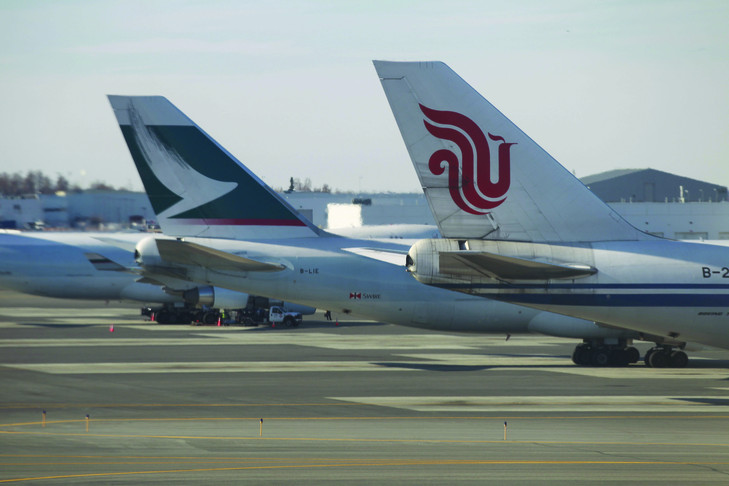Cathay Pacific Cargo sees demand drop but yields and load factor increase
17 / 04 / 2020

Hong Kong flagship carrier Cathay Pacific Group today released combined Cathay Pacific and Cathay Dragon results for March this year, which show a decrease in the amount of cargo and mail carried compared with the same month in 2019.
The group’s results reflect the impact of the global coronavirus pandemic, which has resulted in tightened travel restrictions and quarantine requirements implemented in Hong Kong and other markets.
The Group commented: “As the economic impact of the global Covid-19 pandemic is intensifying, a recovery timeline in our customer demand remains impossible to predict. We still do not see an improvement in our advance passenger bookings and we are anticipating average daily passenger numbers to remain below 1,000 throughout April”.
In March this year, Cathay Pacific and Cathay Dragon carried 119,277 tonnes of cargo and mail — a 35.6% year-on-year decrease. Revenue freight tonne kilometres (RFTKs) also fell by 29% year on year in March.
However, the cargo and mail load factor increased by nine percentage points to 77.4%, while capacity, measured in available freight tonne kilometres (AFTKs), declined by 37.2%.
Commenting on its March performance, Cathay Group said: “While we continue to operate a full freighter schedule, our passenger flight reductions have had a significant impact on our overall cargo capacity. Our cargo volumes were down, but load factors and yield were up due to air cargo capacity reduction in the global market.
“To support global supply chains at this critical time, we have been adding cargo capacity in the form of more freighter flights as well as a total of 257 pairs of cargo-only passenger flights in March. We currently expect to operate a similar number of cargo-only passenger flights in April, including on some long-haul routes such as the Southwest Pacific where air cargo capacity is extremely tight.
“The resumption of production in mainland China saw exports from our home market Hong Kong and the mainland rebound following a weaker February. However, other transshipments were negatively impacted by lockdowns and emergency measures in various markets in the second half of the month, in particular the India sub-continent.
“Our commodity mix also changed with a surge in the transportation of medical supplies such as face masks, protective clothing, hand sanitiser and other pharmaceutical products. On the other hand, the volume of consumer goods such as garments and automobile parts declined.”
Looking to the future, the Group added: “In April and May, we will be operating a bare skeleton passenger flight schedule comprising 3% of our normal capacity.
“We are exploring all options to ensure that the Cathay Pacific Group rides out this current storm, and is able to compete vigorously and to help Hong Kong recover when we emerge from this crisis.”














